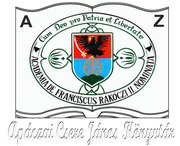Please use this identifier to cite or link to this item:
https://dspace.kmf.uz.ua/jspui/handle/123456789/4635Full metadata record
| DC Field | Value | Language |
|---|---|---|
| dc.contributor.author | Hajdu Viktória | hu |
| dc.contributor.author | Jakab-Nácsa Alexandra | hu |
| dc.contributor.author | Muránszky Gábor | hu |
| dc.contributor.author | Kocserha István | hu |
| dc.contributor.author | Fiser Béla | hu |
| dc.contributor.author | Bela Fiser | en |
| dc.contributor.author | Фішер Бейло | uk |
| dc.contributor.author | Ferenczi Tibor | hu |
| dc.contributor.author | Nagy Miklós | hu |
| dc.contributor.author | Viskolcz Béla | hu |
| dc.contributor.author | Vanyorek László | hu |
| dc.date.accessioned | 2025-01-29T11:43:29Z | - |
| dc.date.available | 2025-01-29T11:43:29Z | - |
| dc.date.issued | 2021 | - |
| dc.identifier.citation | In International Journal of Molecular Sciences. 2021. Volume 22., Issue 11. 13 p. | en |
| dc.identifier.issn | 1661-6596 (Print) | - |
| dc.identifier.issn | 1422-0067 (Online) | - |
| dc.identifier.other | DOI: https://doi.org/10.3390/ijms22115945 | - |
| dc.identifier.uri | https://dspace.kmf.uz.ua/jspui/handle/123456789/4635 | - |
| dc.description.abstract | Abstract. The catalytic hydrogenation of 2,4-dinitrotoluene (DNT) to 2,4-toluenediamine (TDA) is a key step in the production of polyurethanes; therefore, the development of efficient hydrogenation catalysts for industrial use is of paramount importance. In the present study, chromium(IV) oxide nanowires were decorated by palladium and platinum nanoparticles in a one-step, simple, and fast preparation method to yield highly efficient hydrogenation catalysts for immediate use. The nanoparticles were deposited onto the surface of CrO2 nanowires by using ultrasonic cavitation and ethanol as a reduction agent. Beneficially, the catalyst became catalytically active right at the end of the preparation and no further treatment was necessary. The activity of the Pd- and Pt-decorated CrO2 catalysts were compared in the hydrogenation of 2,4-dinitrotoluene (DNT). Both catalysts have shown high activity in the hydrogenation tests. The DNT conversion exceeded 98% in both cases, whereas the 2,4-toluenediamine (TDA) yields were 99.7 n/n% and 98.8 n/n%, with the Pd/CrO2 and Pt/CrO2, respectively, at 333 K and 20 bar H2 pressure. In the case of the Pt/CrO2 catalyst, 304.08 mol of TDA formed with 1 mol Pt after 1 h hydrogenation. Activation energies were also calculated to be approximately 24 kJ∙mol−1. Besides their immediate applicability, our catalysts were well dispersible in the reaction medium (methanolic solution of DNT). Moreover, because of their magnetic behavior, the catalysts were easy to handle and remove from the reaction media by using a magnetic field. | en |
| dc.description.sponsorship | This research was supported by the European Union and the Hungarian State and co-financed by the European Regional Development Fund in the framework of the GINOP-2.3.4-15-2016-00004 project, which aims to promote the cooperation between the higher education and the industry. | en |
| dc.language.iso | en | en |
| dc.publisher | MDPI | en |
| dc.relation.ispartofseries | ;Volume 22., Issue 11. | - |
| dc.rights | Attribution-NonCommercial-NoDerivs 3.0 United States | * |
| dc.rights.uri | http://creativecommons.org/licenses/by-nc-nd/3.0/us/ | * |
| dc.subject | nanowire | en |
| dc.subject | magnetic catalyst | en |
| dc.subject | hydrogenation | en |
| dc.subject | 2,4-toluenediamine | en |
| dc.subject | activation energy | en |
| dc.title | Precious-Metal-Decorated Chromium(IV) Oxide Nanowires as Efficient Catalysts for 2,4-Toluenediamine Synthesis | en |
| dc.type | dc.type.collaborative | en |
| Appears in Collections: | Fiser Béla | |
Files in This Item:
| File | Description | Size | Format | |
|---|---|---|---|---|
| Fiser_et_al_Precious_Metal_Decorated_Chromium_Oxide_Nanowires_2021.pdf | In International Journal of Molecular Sciences. 2021. Volume 22., Issue 11. 13 p. | 1.54 MB | Adobe PDF | View/Open |
This item is licensed under a Creative Commons License





